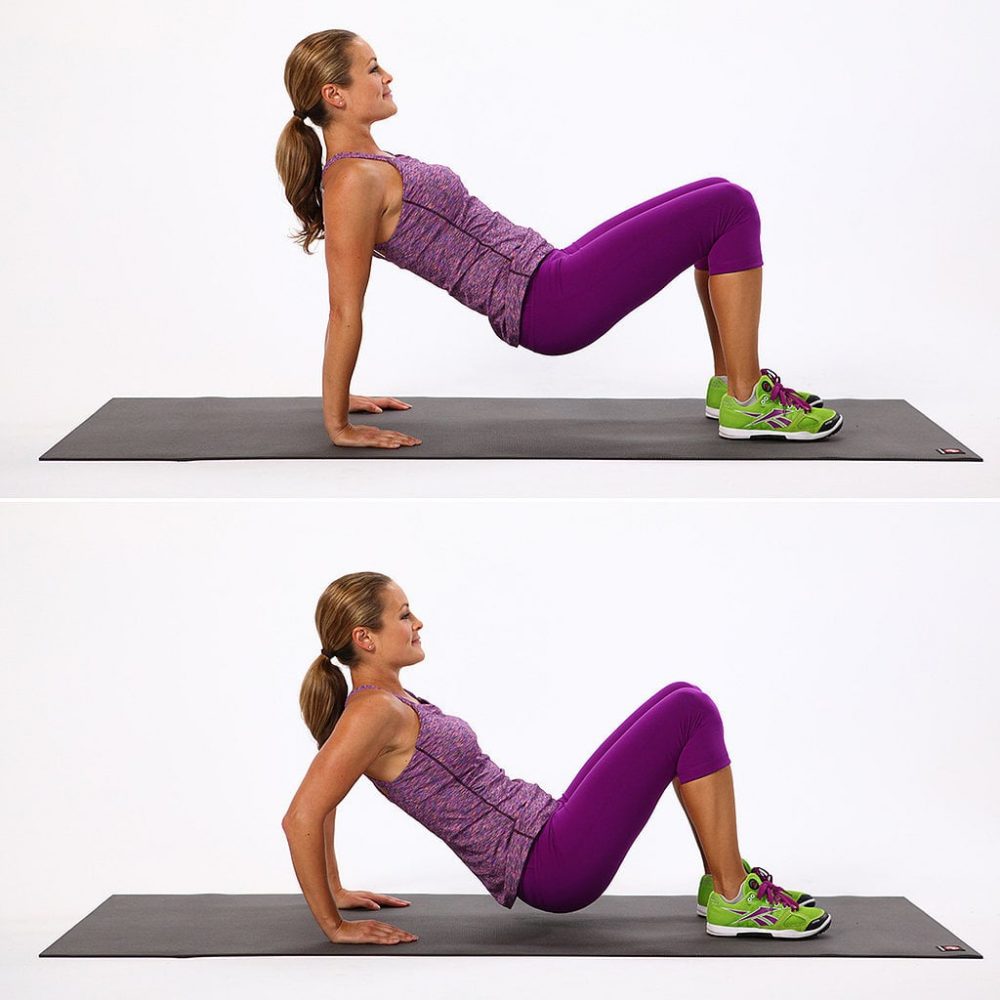A good option for all those who are short of time and do 5 exercises for chest, 5 exercises for shoulders, and 5 exercises for triceps, is the Dip.

A bodyweight dip requires you to have a pretty good base level of strength throughout your body, because you’re going to be lifting your whole body up and down.
How to do a proper Dip Exercise:
- First, make sure you can do a dip. Don’t hop up there and then lower yourself unless you’re confident you can get through at least one of these things.
- Grab the parallel bars (or rings) and hoist yourself up. At this point look straight ahead and contract your stomach muscles (just like you do when you do squats and deadlifts). If you’re keeping your abs tight for all these exercises, you’ll never have to do a crunch again and you’ll still have washboard abs.
- Bend your knees if you like (so your feet are behind you), for stability purposes, but keep your head up and look straight ahead.
- Keeping your elbows at your side, lower yourself until your triceps are parallel to the floor. will recommend Do not go past parallel, for that puts too much strain on your shoulders at a weird angle and can cause injury/discomfort. Only go down to parallel.
- Once you hit parallel, explode back up until JUST before you’re able to lock your elbows. By not locking your elbows, you keep the tension in your muscles and don’t jack up your joints.
- Now do another one. And then another!

Note:
- Keep your elbows as tight as possible, keep your abs tights, and keep your body in balance as you go up and down. Don’t swing, if you start swinging your body as you go up and down, you take the emphasis off the muscles you’re trying to work.
- Don’t flair out your elbows if you can avoid it. The more “out” your elbows are, the more emphasis on your chest.
- Go Slow: keep your abs tight and lower yourself ridiculously slowly.
There is no doubt to see results your body will have to recruit every muscle in your chest, shoulders, and triceps (including all stabilizer muscles).
Disclaimer
The Content is not intended to be a substitute for professional medical advice, diagnosis, or treatment. Always seek the advice of your physician or other qualified health provider with any questions you may have regarding a medical condition.